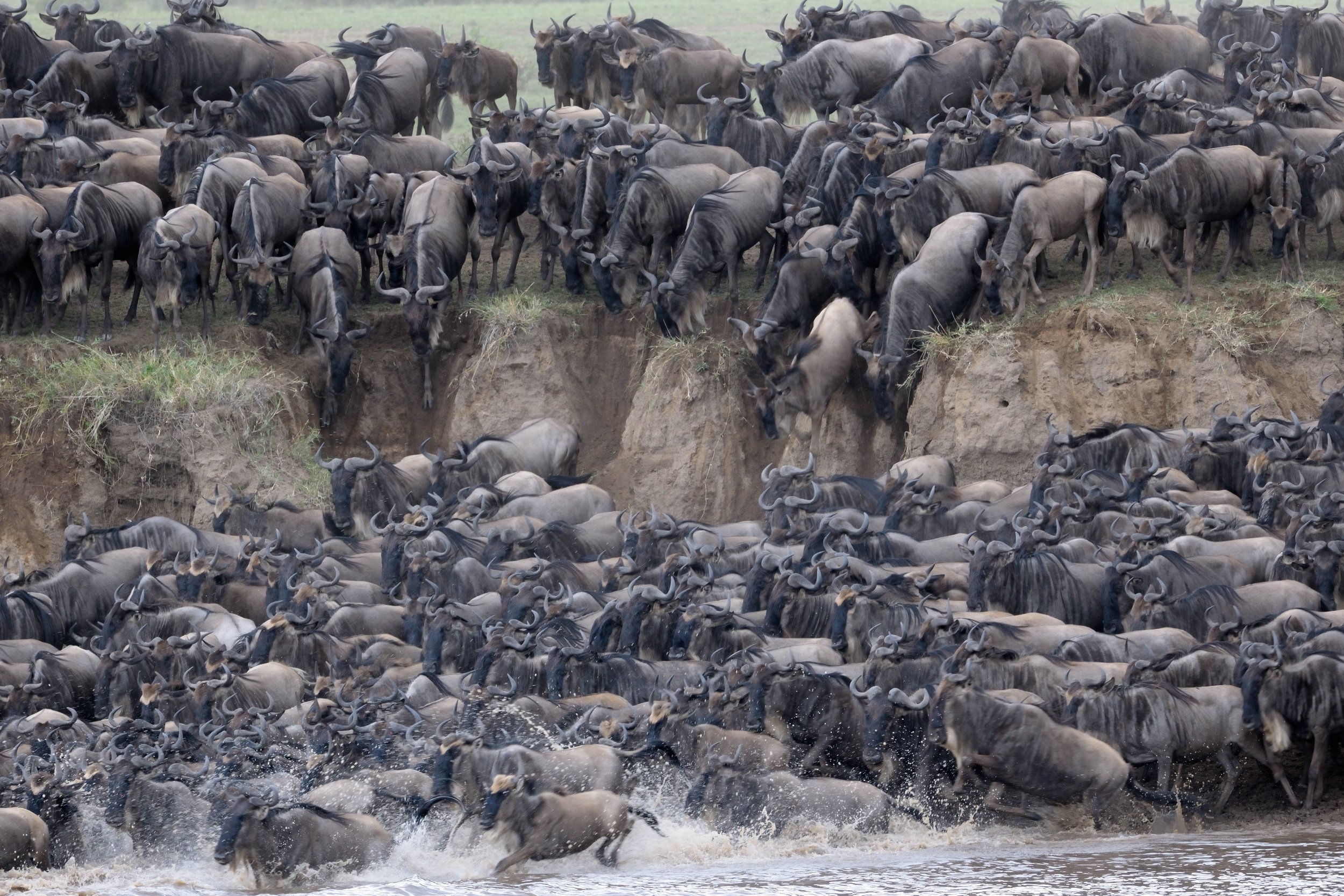Planning a Trip to the Serengeti?
Close your eyes. Now, think of the Serengeti Plains. Are you there yet? You should be! Wildebeest, crocodiles, and wide-open plains await you. The vast, verdant sloping fields are dotted with flat-topped acacia trees. Is that a lion perched on a rocky outcrop?
The Serengeti is vast: its sheer size (5,700 square miles or 37,00,000 acres) takes your breath away. Each season brings its own attractions and ultimately determines where you might like to stay. The Mara River in the Serengeti forms the northern boundary between Tanzania and Kenya and it’s here from June through November you can follow the annual migration of millions of wildebeests and zebras. If you want to catch all of this action, it’s a good idea to plan a year in advance. Camps are generally full during these prime months!
No one can predict the migration’s timing with assurance. Everything is based on the weather, because the migration is driven by the wildebeests’ search for food. It is crucial to work with a professional like Tett Safaris to ensure the best possible chances of getting the timing just right in order to see the beginning of the migration.
While the wildebeest migration is the star attraction, it’s not the only show in town. There’s great resident game viewing year-round in northern Serengeti, especially the big cats, who don’t migrate south. There’s so much attention on the June to November migration period that guests are often surprised to learn that the Serengeti offers peak game viewing opportunities in January through March. At this time of year the wildebeests and zebras are calving in the southern Serengeti, and you can expect to see lots of babies. It would not be unusual to see a wet newborn wildebeest stand up and take his wobbly legs on the first run of his life. This is the green season and it is absolutely beautiful, with occasional afternoon thunderstorms, which also helps to keep the dust to a minimum.
In southern Serengeti, you’re near the most authentic cultural interactions with Masai that Tanzania has to offer. You are also within driving range of the Ngorongoro Crater, which offers a distinct change in scenery from the Serengeti plains to the rolling hills that lead up to the Crater.
In May, as the plains start to dry out and the grasses get shorter, the herds gradually venture northwest to begin their epic journey toward the Mara River, generally in the Moru kopjes and central Seronera Valley areas. Come June, you will want to stay in the western corridor of the Serengeti, where the wildebeest must cross the Grumeti River, as mighty crocodiles lay and wait.
The Serengeti ecosystem is a wonderful place to explore any time of year. If your dream is to witness the wildebeest migration, you will need to plan your visit around the migration’s expected patterns. But consider this: at any time of year, the Serengeti offers more bang for your buck when it comes to wildlife sightings and spectacular scenery. If you are simply hoping to satisfy your dream of seeing some of Africa’s most popular Big 5 wildlife, Serengeti is the place to be.
Call us at Tett Safaris and we will get you there with perfect timing. It’s what we do! If you’d like to learn more or if you would like to book a safari to the Serengeti, please contact us to book a complimentary consultation.
Article by Carolyn Tett, Owner Tett Safaris
Share this Explorer’s Blog with your Family & Friends







